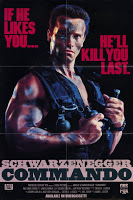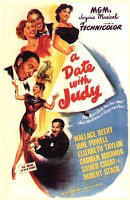The Scar
 Steve Stekeley's 1948 Noir The Scar (also known as Hollow Triumph) is perhaps most notable because its leading man is Paul Henreid, who six years earlier had played the part of Victor Laszlo in Casablanca. Beyond that, The Scar is at first sight an eminently ephemeral movie, easily forgettable. But it's interesting in so far as it problematizes the very process of memory and recognition.
Steve Stekeley's 1948 Noir The Scar (also known as Hollow Triumph) is perhaps most notable because its leading man is Paul Henreid, who six years earlier had played the part of Victor Laszlo in Casablanca. Beyond that, The Scar is at first sight an eminently ephemeral movie, easily forgettable. But it's interesting in so far as it problematizes the very process of memory and recognition.Henreid's character in Casablanca is a Czech resistance hero who is strangely both the center of the plot and utterly marginal. For though the film ostensibly revolves around Laszlo's efforts to flee the Nazis and seek asylum in America, what we remember is the tension and romance between Ingrid Bergman (playing Laszlo's wife) and Humphrey Bogart as Rick Blaine, the bar-owner who has the letters of transit that would make Lazslo's escape possible.
Similarly, in The Scar, Henreid again plays a character who fades from view... the difference being that in this film Henreid also plays the character who replaces him. Moreover, this is a film about the replacement itself, and the effect that it has (or, oddly enough, doesn't have) on the audience.
Henreid is Johnny Muller, a sophisticated and intelligent, but also brutal, gangster who at the movie's outset has just been released from jail. Reunited with his former fellow-criminals and underlings, he proposes they rob a casino run by a rival, one Rocky Stansyck. But the heist does wrong and though Muller one of his buddies, Marcy, get away with the dough, they know that Stansyck's men are on their trail, and what's more that Stansyck has a reputation as one who never forgets a slight. "Even if it takes you 20 years," he tells his heavies, they must at all costs make Johnny and his partner pay.
Marcy decides to hide out in Mexico, cursing Muller for letting him down: "I'm through with you. I'm going to blow. Mexico. South America. On my own. As far as I can get." But if there's one thing that Noir teaches us about crossing the border, it's that there's no refuge on the other side. Noir has no time for the notion that frontiers can protect us or keep us safe from what we fear most. Just as Janet Leigh in Touch of Evil finds no sanctuary north of the border, so Marcy finds none south of it. Soon enough, Muller is shown a newspaper headline and photo that confirms that the long arm of Stansyck's rough justice has caught up with his old pal, who has been gunned down in Mexico City.
Johnny himself is hiding almost in plain view, having taken up a civilian job offered him originally by the authorities when he left jail. But he knows that he, too, is not safe for long. And then he stumbles across a stunning coincidence: there's a psychoanalyst who has an office across the street who bears a striking resemblance to him. They could almost be the same person except that the analyst, Dr Bartok, has a prominent scar on one cheek.
And so Muller decides to take on Bartok's identity: he follows him around, studies the basics of psychology, learns the doctor's habits, romances his girl, and then finally etches a scar on his own cheek before disposing of his double and stepping into the dead man's life.

The one flaw in the whole arrangement is that Johnny finds he has accidentally disfigured the wrong cheek: he has made himself into literally a mirror image of his victim, with a scar on the right-hand side where the doctor had been marked on the left. But the film tells us that this doesn't matter: oddly enough, nobody notices the change; everyone, from Bartok's patients to even his wife, is prepared to accept that Muller really is Bartok.
In a film so centrally concerned with psychoanalysis, the message is obvious: desire trumps reality. Bartok's associates so wish it to be him, that they are prepared to ignore--better, that they simply do not see--the dramatic change in his face, the switch of the man's most distinguishing characteristic from left to right. And the same factor determines that the only person who does eventually see through the transformation is precisely the one who wants it not to be so: it is Bartok's secretary and lover, Evelyn, whom Muller had already seduced as Muller, who recognizes Johnny for who he is.
Finally, the ultimate irony is that Johnny's downfall comes precisely from the fact that he cannot over-ride the desire of others to see him as Bartok rather than as Muller. On the point of eloping with Evelyn on a liner to Hawaii, Muller is chased down by two thugs in the pay of a local casino... who are out to make Bartok atone for unpaid debts. Muller frantically tries to point out that his scar is on the other cheek from Bartok's, but to no avail: he, too, is gunned down and the casino's enforcers have got the wrong man, if for the right reason. Caught in the fantasy of living another man's life, Muller finds himself doubly accused in that his alter ego draws the same punishment that he himself had long hoped to evade. The problem with relying on desire to trump reality is that it is not merely your own desire that is at play.
See also: A good account of the film from Noir of the Week.
YouTube Link: the film's opening sequence.








